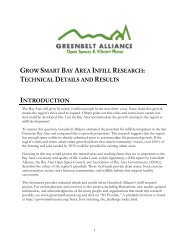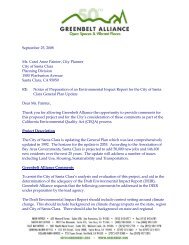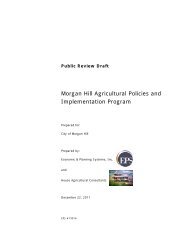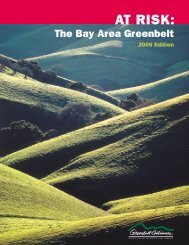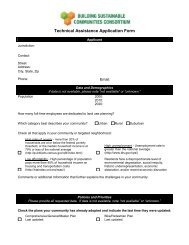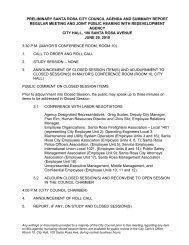Planning For Better Health - Greenbelt Alliance
Planning For Better Health - Greenbelt Alliance
Planning For Better Health - Greenbelt Alliance
You also want an ePaper? Increase the reach of your titles
YUMPU automatically turns print PDFs into web optimized ePapers that Google loves.
The <strong>Health</strong> Issue: Obesity and AsthmaSolution: Complete Streets and Walkable NeighborhoodsPLANNINGFOR BETTERHEALTHQuick FactsFact: Obesity rates in the United States have increased dramatically in the last thirty years.Approximately two-thirds of U.S. adults and one-fifth of children are either obese or overweight.Overweight people are at risk of many chronic diseases including heart disease anddiabetes. (Source: U.S. Centers for Disease Control and Prevention)Fact: More than half of Americans would like to walk more and drive less. Poor communitydesign and lack of pedestrian facilities are the primary reasons people cite for not walkingmore. An overwhelming percentage support policies intended to make their communitiesmore livable by reducing traffic speed and creating a safer pedestrian environment.(Source: Surface Transportation Policy Partnership)Key messages you can use ~“Communities must be designed around people and not cars. Walkable neighborhoodsthat have a mix of homes, shops and jobs give people a choice to leave theircars parked and walk or bike instead. This is good for our health and good forthe planet.”“Nearly half of the Bay Area’s greenhouse gas pollution comes from driving. At thesame time, many of the trips we make are less than three miles — the equivalentof a 15-minute bike ride. If we make our streets safer for cyclists and pedestrians,we can improve air quality, reduce carbon emissions and engage in a moreactive lifestyle.”Policy Suggestions• Ensure that pedestrians, bicyclists, and transit riders of all ages and abilities can safelyshare the street network.• Identify barriers to pedestrian and bicycle access, especially at transit stations, andprioritize completion of these gaps.• Plan and implement a continuous network of walkways and bikeways and ensure they connect people with primary destinations (transit stations, job centers, shops,offices, libraries, parks).Performance Standards and Measurable OutcomesCommunities with complete streets policies can measure success through a numberof ways: the miles of on-street bicycle routes created; new linear feet of pedestrianaccommodation; changes in the number of people using public transportation, bicycling,or walking (mode shift); and number of new street trees.Resources & ReferencesHow walkable is your neighborhood? Check out www.walkscore.com.3




